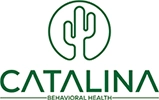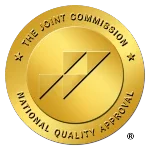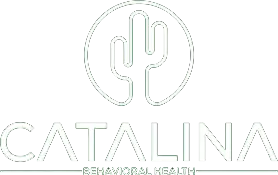Methamphetamine Withdrawal Treatment Options
Being addicted to methamphetamine is a challenging experience for everyone affected, from the person suffering from meth addiction as well as their friends and family. According to the Substance Abuse and Mental Health Administration, approximately 2 million people aged 12 or older use crystal meth every year – with an additional 500 trying it for the first time each day.
The meth withdrawal process can be unpleasant and long-lasting with uncomfortable withdrawal symptoms, making it difficult for those suffering from addiction to make the decision to seek help.
With the encouragement and guidance from those closest to them, people dealing with a substance abuse issue can find their way back to recovery.
To learn more about meth withdrawal symptoms and how Catalina Behavioral Health can help, keep reading!
24 Hour Meth Addiction Rehab Hotline
What is Methamphetamine?
Methamphetamine is a powerful stimulant that affects the central nervous system and produces intense sensations of pleasure and euphoria. As a result, it is highly addictive and difficult to quit without professional help.
In addition to its effects on the brain, meth can also lead to physical problems like cardiovascular issues, skin sores, tooth decay, and extreme weight loss.
What are the Signs of Drug Abuse and Methamphetamine Addiction?

Substance misuse is an escalating issue in the US, with methamphetamine abuse one of the most frequently reported.
Methamphetamine addiction can manifest itself in various ways and some people may not recognize the symptoms at first. That’s why it’s important to educate yourself about the common signs of methamphetamine abuse, such as:
Behavioral Signs of Meth Amphetamine Abuse
- Unusual changes in behavior, such as extreme energy or irritability
- Neglecting responsibilities at work or school
- Poor performance at work or school
- Increased isolation from friends and family
- Financial difficulties due to spending money on drugs
- Loss of interest in hobbies or activities that were once enjoyed
- Regularly engaging in risky behaviors
- Erratic sleeping patterns or insomnia
Physical Signs Of Methamphetamine Abuse
There are also physical signs that may indicate someone is abusing methamphetamine. These include:
- Dilated pupils
- Nausea
- Vomiting
- Diarrhea
- Constipation
- Changes in appetite
- Weight loss
- Uncontrollable twitching movements or tremors
- Joint pain accompanied by redness and swelling around joints
- Increased heart rate and respiration rate accompanied by chest pain
- High blood pressure accompanied by headaches
- Itchy skin with scabs from scratching excessively due to paranoia about bugs crawling under their skin
- Sweating
What are the Psychological Signs of Meth Use?
There are also psychological symptoms of meth use, such as:
- Paranoia
- Hallucinations
- Suicidal Thoughts
- Depression
- Anxiety
- Mood swings
- Cravings
- Psychotic symptoms
Crystal Meth Withdrawal Symptoms

For those struggling with crystal meth addiction, understanding the crystal meth withdrawal timeline and symptoms associated with crystal meth can be essential in helping them make informed decisions about their recovery journey.
Acute Withdrawal Phase
The initial phase of crystal meth withdrawal symptoms typically lasts between one and two weeks. During this time, you may experience a range of both physical and psychological symptoms.
These symptoms can be extremely challenging but there are ways to make them more manageable. For example, engaging in regular exercise or engaging in counseling sessions can help reduce the severity of these symptoms.
Drug Cravings and Stimulant Withdrawal Symptoms
Drug cravings occur while an individual is going through meth withdrawal. This happens because your brain has become conditioned to needing the drug in order to function properly so it will attempt to convince you that taking it will make things better again.
It is important to remember that cravings do pass if given enough time; however, if they become unmanageable, reach out for help from family members or healthcare professionals who can provide support and guidance throughout your recovery process.
Physical Symptoms
When going through crystal meth withdrawal, individuals can experience a range of physical symptoms including fatigue, lack of appetite, nausea, muscle pain and stiffness, headaches, insomnia, fever, and chills.
The physical symptom severity can range from mild to severe depending on a person’s level of addiction. These meth withdrawal symptoms are usually accompanied by intense cravings for the drug which can cause further strain on an individual’s ability to stay sober.
Psychological Symptoms
Aside from the physical impacts of coming off crystal meth, there are also psychological symptoms to consider when seeking help for addiction.
For many individuals, the psychological effects of crystal meth addiction can be more difficult to manage than the physical symptoms. These can include depression and anxiety, irritability, cravings, and trouble concentrating – any of which can lead to further destructive behaviors like self-harm or suicidal thoughts.
Get immediate Help for Meth Addiction
Crystal Meth Detox
Meth is a powerful and highly addictive drug. It is incredibly difficult for someone who has been using meth to get clean, but with the right treatment plan, it is possible. Keep reading to learn about at-home detox and medical detox.
At-Home Detox
At-home detox could be an option for those who have been using meth for only a short amount of time. Meth detox and withdrawal from crystal meth involve abstaining from the drug in order to allow your body to naturally rid itself of the drug or its lingering effects.
It’s important to note that at-home detox should never be attempted without professional medical supervision. Your doctor can help you determine if at-home detox is right for you and provide guidance on how best to proceed with the process.
Medical Detox
Medical detox is generally recommended for those who have been using meth on a regular basis over an extended period of time. It provides access to more intensive medical supervision and support during withdrawal than what is available through an at-home program would offer.
During medical detox, individuals are monitored by healthcare professionals who can manage severe withdrawal symptoms with medications if necessary.
In addition to providing FDA-approved medications during meth withdrawal, medical staff members also monitor vital signs such as blood pressure and heart rate in order to ensure that methamphetamine users are safe throughout the entire detox and treatment process.
They may also provide counseling services in order to ensure that individuals have access to emotional support during this difficult time.
Meth Addiction Treatment Options After Detox: What You Need to Know

After detox is a crucial point for those struggling with addiction. Detox is the initial step toward recovery, but it’s important that you don’t stop there. When your body has been weaned off the substance, you will be faced with some big decisions about how to move forward.
Here is a breakdown of your meth treatment options after detox.
Inpatient Treatment
If you have gone through detox and are in need of more intensive support, then inpatient treatment is an excellent option. This type of program involves living at a residential facility while receiving 24/7 care from medical professionals.
Not only will you have access to counselors and therapy sessions, but you will also be surrounded by peers who understand what you’re going through and can offer additional support and encouragement throughout your journey.
Outpatient Treatment
An outpatient treatment program is another route many choose to take after detoxing from meth addiction. Outpatient programs are less intensive than inpatient programs as they allow clients to live at home while attending scheduled visits with counselors or therapists several times a week.
This type of program is best suited for those who have already completed an inpatient program or for those who don’t require 24/7 monitoring and support but still need help on their path toward sobriety.
Aftercare Programs
Aftercare programs such as 12-step meetings and individual or group therapy sessions provide ongoing support for those who wish to stay sober long-term. These types of programs help individuals learn new skills needed to cope with life without drugs or alcohol, as well as develop healthy habits when dealing with stressors or triggers that could lead them down a path back toward substance abuse.
Licensed Drug Treatment Services
Get Help Now if You’re Struggling With Meth Addiction
No matter which meth treatment options after detox that you choose, it’s important that you remember that recovery is a lifelong journey—one that requires dedication and hard work, but one that can ultimately lead to a better quality of life free from drug use or addiction.
If you are looking for help on your road to sobriety, there are plenty of resources out there that can guide and support you every step of the way! Reach out to Catalina Behavioral Health today and get started on the path toward lasting recovery!
All calls to our facility are confidential, so please reach out now to get options for lasting recovery from the cycles of meth use and abuse!





